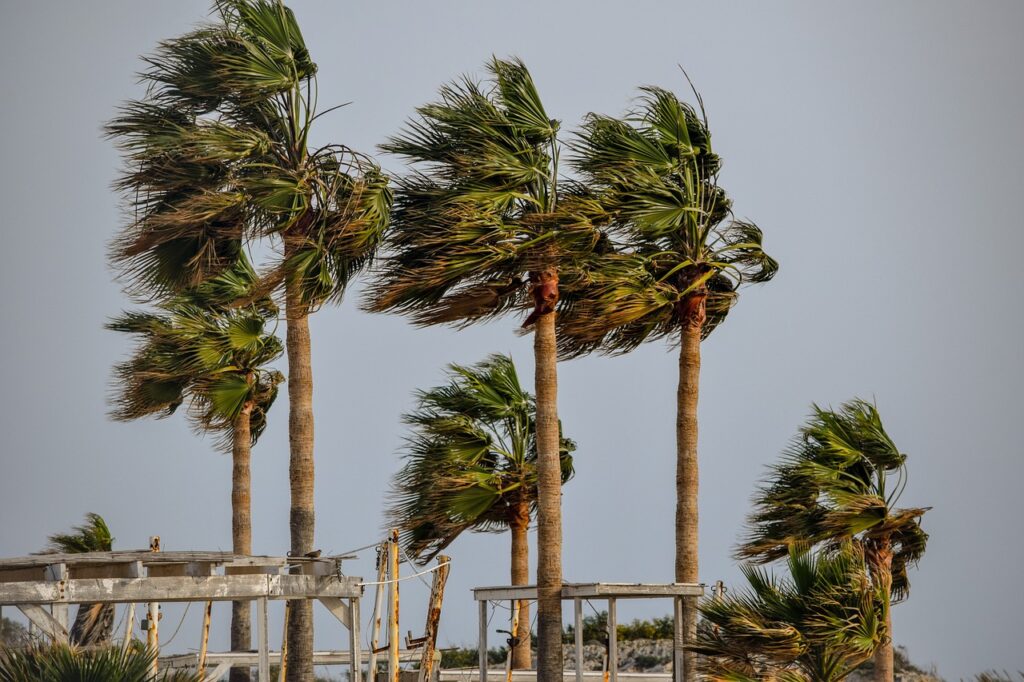When hurricanes approach coastal areas, the dangers go beyond just strong winds and heavy rainfall. One of the most destructive forces during a hurricane is the storm surge. While it may not be as immediately visible as winds or rain, storm surge is often the deadliest aspect of these storms, responsible for widespread flooding and severe damage to coastal communities.
But what exactly is a storm surge, how does it form, and why is it so dangerous? In this blog post, we’ll break down what you need to know about storm surges and how to protect yourself from this powerful natural phenomenon.
What Is a Storm Surge?
A storm surge is the abnormal rise in sea level that occurs during a hurricane or other intense storm, caused by the strong winds pushing ocean water toward the shore. This surge of water can flood coastal areas, inundating homes, roads, and businesses. Unlike normal tides, which follow a predictable cycle, a storm surge can cause water levels to rise suddenly and dramatically, sometimes by 10 feet or more in just a few hours.
The rise in sea level caused by storm surge can vary based on several factors, including the storm’s strength, speed, and direction, as well as the shape of the coastline. Low-lying coastal areas are especially vulnerable to storm surges, which can reach far inland, causing damage miles away from the actual coast.
How Does a Storm Surge Form?
Storm surge is primarily driven by the winds of a hurricane. As the storm moves across the ocean, its powerful winds blow across the surface of the water. This force pushes the water toward the shore, causing it to pile up. Several factors contribute to the size and impact of a storm surge:
- Wind Speed: The stronger the winds, the greater the force pushing water toward the land. Hurricanes with higher wind speeds often create larger storm surges.
- Storm Pressure: Hurricanes are areas of extremely low atmospheric pressure. This low pressure causes the ocean surface to rise slightly, contributing to the surge.
- Shape of the Coastline: Areas with shallow coastal waters or funnel-shaped bays can experience higher storm surges because the water has less room to disperse and is forced upward more quickly.
- Tidal Conditions: If a hurricane arrives during high tide, the surge can be even more dangerous, as the water level is already elevated. This combination of a storm surge and high tide can lead to what is known as a “storm tide,” which can result in catastrophic flooding.
Why Is Storm Surge So Dangerous?
The sheer volume and power of water pushed inland by a storm surge make it one of the most dangerous aspects of a hurricane. Here are a few reasons why storm surges are so destructive:
- Flooding: Storm surge often causes severe flooding, especially in low-lying coastal areas. Homes, roads, and buildings can be submerged in water, sometimes up to several feet. The sudden rise in water levels gives little time for evacuation, making it a major safety hazard.
- Waves on Top of the Surge: In addition to the rising water levels, storm surges are accompanied by large waves. These waves can batter buildings and structures, causing additional damage beyond the flooding itself.
- Erosion: Storm surge can cause significant coastal erosion. The powerful force of the water can strip away beaches, dunes, and vegetation, leaving coastal areas more vulnerable to future storms.
- Contaminated Water: Floodwaters from storm surge can mix with sewage, chemicals, and debris, creating hazardous conditions for people who come into contact with it. This contaminated water can cause serious health risks after the storm passes.
- Long-Lasting Damage: Beyond the immediate impact, storm surge can leave long-lasting damage to communities, including weakened infrastructure, destroyed homes, and disrupted utilities.
Famous Examples of Storm Surges
Throughout history, some of the most devastating hurricanes have caused catastrophic damage due to storm surge. A few notable examples include:
- Hurricane Katrina (2005): Katrina generated one of the largest and most destructive storm surges ever recorded in the United States. Some areas along the Gulf Coast experienced surges as high as 27 feet, leading to massive flooding, particularly in New Orleans, where levees failed, and much of the city was submerged.
- Hurricane Sandy (2012): Although Hurricane Sandy was not as strong in terms of wind speed, it caused a significant storm surge along the U.S. East Coast, particularly in New York City and New Jersey. Sandy’s storm surge reached 14 feet in some areas, flooding subways, tunnels, and neighborhoods, and causing billions of dollars in damage.
- Hurricane Ike (2008): Ike’s storm surge flooded parts of the Texas coast, with surges reaching up to 15 feet in Galveston and other nearby areas, causing widespread destruction to homes and infrastructure.
How to Stay Safe During a Storm Surge
If you live in a coastal area prone to hurricanes, understanding the dangers of storm surge is vital for staying safe. Here are a few tips to help protect yourself and your property:
- Know Your Evacuation Zone: Coastal areas are often divided into evacuation zones based on their vulnerability to storm surge. Familiarize yourself with your zone and have an evacuation plan in place well before a storm is forecast.
- Listen to Local Authorities: Pay close attention to evacuation orders and updates from local authorities. When a storm surge is predicted, evacuating early can save lives. Do not wait until the last minute to leave, as storm surges can arrive suddenly.
- Prepare Your Home: If you’re in a storm surge-prone area, consider elevating your home, installing flood barriers, or using sandbags to help keep floodwaters out. Relocate important belongings and documents to higher ground.
- Stay Informed: Monitor weather updates through trusted sources, like the National Hurricane Center or local meteorological services. Know the expected storm surge height in your area and be ready to act quickly.
Conclusion
A storm surge is one of the most dangerous and destructive forces of nature during a hurricane. Its ability to flood coastal areas, knock down structures, and endanger lives makes it critical to take precautions when hurricanes threaten your area. Understanding how storm surges form and why they’re so dangerous can help you stay safe and minimize the risks associated with these powerful natural events. Always prioritize safety by heeding evacuation warnings and being prepared well in advance of a storm.


